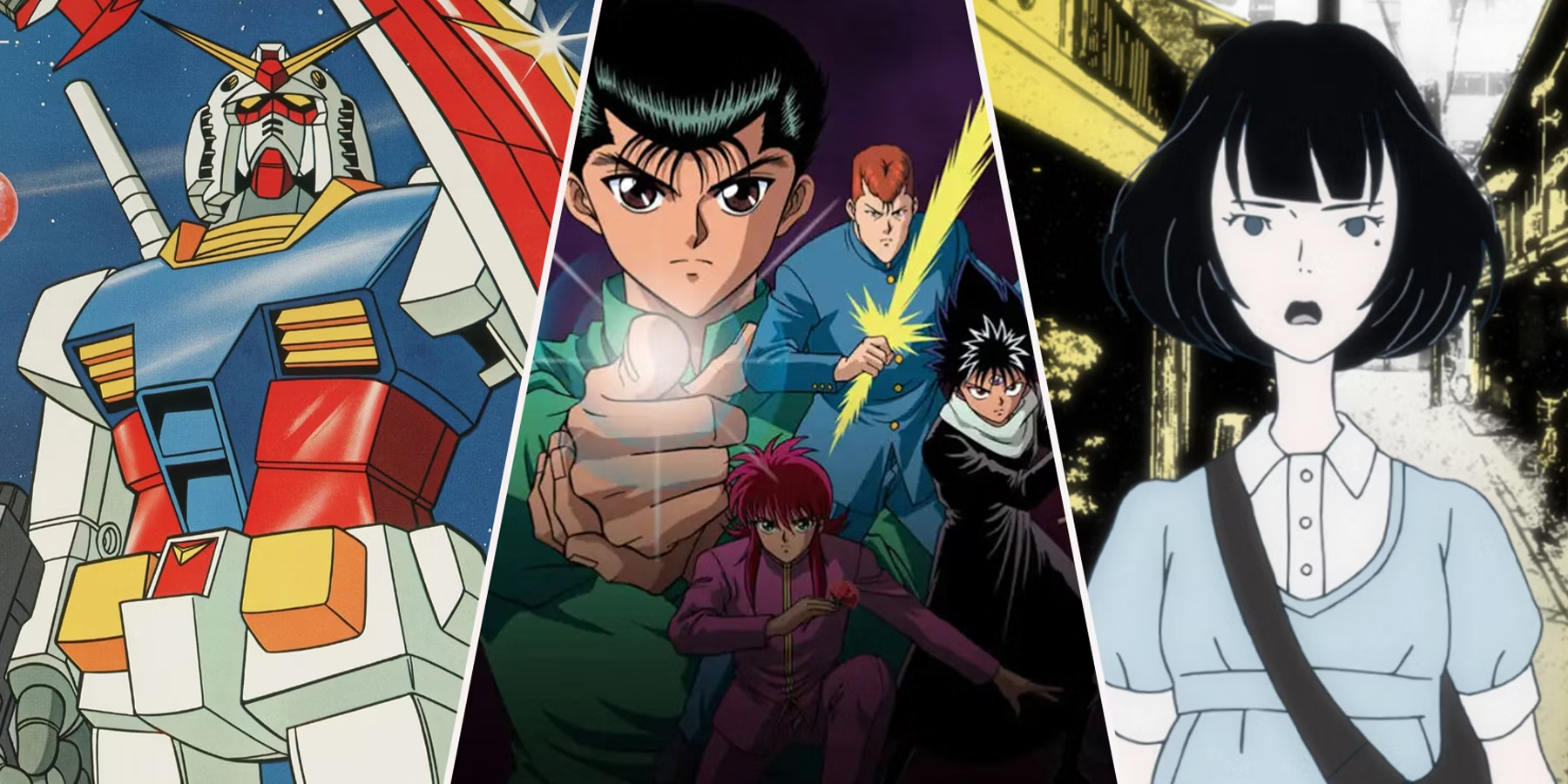Anime has evolved significantly over the years, transitioning from simple, hand-drawn designs to complex, high-definition visuals. Each decade has brought new artistic innovations, reflecting technological advancements, cultural shifts, and changing audience tastes. This journey, spanning from the 1960s to today, has produced iconic series that not only defined their eras but also influenced the future of animation. Below is a look at the key milestones in anime’s visual evolution.
1960s: The Inception of Modern Anime

The modern era of anime began in the 1960s, largely thanks to the pioneering work of Osamu Tezuka, often referred to as the “God of Manga.” His 1963 anime series Astro Boy is considered one of the first television anime shows and helped define the basic aesthetic of early anime. Due to budget constraints and limited technology, character designs were simple but expressive. Tezuka’s use of large, detailed eyes became a signature feature of anime during this period.
The animation process was labor-intensive, relying on traditional techniques like using cels—hand-drawn, translucent celluloid sheets. Despite these limitations, the 1960s set the stage for the future of anime, with its innovative visual style and unique storytelling methods.
1970s: A Time of Experimentation and Diversification

The 1970s saw anime studios experimenting with various genres and art styles. Iconic mecha series like Mazinger Z (1972) and Mobile Suit Gundam (1979) introduced intricate mechanical designs and more dynamic animations. These shows catered to an expanding audience, pushing the boundaries of anime’s visual and thematic complexity.
Meanwhile, the rise of the Shoujo genre brought a softer, more delicate art style to the forefront, as seen in series like Candy Candy (1976). Shoujo anime featured more detailed facial expressions and ornate, flowing hair designs, emphasizing emotional depth. This decade marked a period of visual diversification that laid the groundwork for many of today’s popular genres.
1980s: The Era of Classics

The 1980s are often regarded as a golden age for anime, marked by the rise of classic series and the adoption of computer-aided technologies in animation. Series like Dragon Ball (1986) and the groundbreaking film Akira (1988) showcased a leap forward in visual sophistication.
Akira, in particular, was a watershed moment for anime, combining detailed, realistic artistry with fluid animation and a mature, complex storyline. The movie demonstrated anime’s potential as a serious art form and pushed the medium toward international recognition. The 1980s were also characterized by a surge in global interest, as anime began to make its mark outside of Japan.
1990s: The Advent of Digital Animation and International Acclaim

The 1990s ushered in the era of digital animation, allowing for more vivid and complex styles. Neon Genesis Evangelion (1995) and Cowboy Bebop (1998) exemplified this era with their mix of hand-drawn and CGI animation. Evangelion revolutionized the mecha genre with its intricate character designs and emotional depth, while Cowboy Bebop blended Western film noir and jazz aesthetics to create a visually and thematically rich series.
The 1990s also saw anime’s popularity explode in the West, largely due to the success of series like Pokémon (1997) and Sailor Moon (1992). These shows introduced anime to a broader global audience, solidifying its place in mainstream entertainment.
2000s: The Advancement of Digital Animation

The 2000s saw digital animation become the industry standard, allowing for more dynamic fight scenes, stylized character designs, and seamless integration of CGI. Shows like Naruto (2002) and Fullmetal Alchemist (2003) exemplified the visual and narrative depth that this new technology enabled. These series utilized the increased versatility of digital tools to create visually striking action sequences and more complex character designs.
This era also saw the rise of the Moe aesthetic, characterized by cute, youthful characters with exaggerated features like large eyes and small mouths. Series such as The Melancholy of Haruhi Suzumiya (2006) and Lucky Star (2007) epitomized this trend, which became a defining feature of anime in the 2000s.
2010s: High Definition and Artistic Diversity

The 2010s marked the beginning of the high-definition era in anime, with series like Attack on Titan (2013) and Your Name (2016) showcasing the stunning potential of HD visuals. Attack on Titan used dark, realistic art to convey the intensity and brutality of its story, while Your Name captivated audiences with its breathtaking backgrounds and lifelike character animation.
This decade also saw greater artistic diversity, with shows like One Punch Man (2015) blending traditional and modern aesthetics to create a unique visual identity. The blending of CGI with hand-drawn animation became more common, as artists sought to push the boundaries of what could be achieved in anime.
2020s: Innovation and Future Trends

The 2020s have continued to push the limits of anime art, incorporating new multimedia technologies like virtual reality (VR) and augmented reality (AR) to create even more immersive experiences. Series like Demon Slayer: Kimetsu no Yaiba (2019) and Beastars (2019) exemplify the evolving artistic styles of this decade. Demon Slayer blends traditional Japanese art with modern animation techniques to create a visually stunning series, while Beastars utilizes a mix of 3D and 2D animation to craft a unique, eerie aesthetic.
As technology continues to advance, anime’s future promises even more innovation. Virtual and augmented reality could revolutionize the way anime is experienced, offering fans deeper levels of immersion and interaction.
Conclusion
The evolution of anime art styles from the 1960s to today is a testament to the medium’s adaptability and creativity. From the simplistic yet expressive designs of Astro Boy to the high-definition visuals of Your Name and beyond, anime has consistently pushed the boundaries of what is possible in animation. As the industry continues to grow and incorporate new technologies, the future of anime is sure to be filled with even more breathtaking and groundbreaking artistic achievements.










